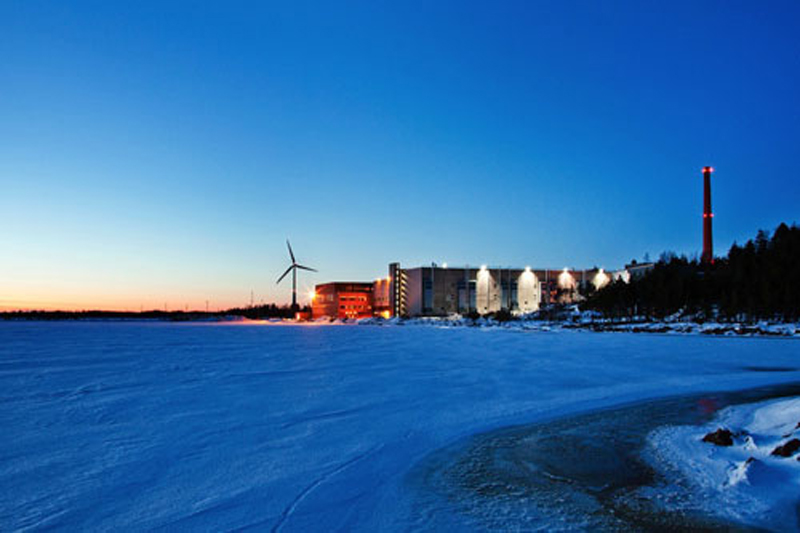Data Centre In Space Feasibility Study To Be Led By Thales

Talk about cloud computing! European Commission chooses Thales Alenia Space to lead feasibility study for data centres in orbit
The quest for the perfect data centre location continues, with the European Commission seeking to explore the feasibility of data centres in space.
Thales Alenia Space, the joint company between Thales (67 percent) and Leonardo (33 percent), announced that it has been chosen by the European Commission to lead the ASCEND (Advanced Space Cloud for European Net zero emission and Data sovereignty) feasibility study for data centres in orbit.
Choosing the perfect location to build a data centre has resulted in server farms being constructed in some pretty unusual locations over the past decade, including under the ocean, in British and Norwegian mines and caves, and in arctic regions.

Data centres in space
Data centre facilities constructed in these locations seek to take advantage of the local environment (usually for cooling purposes).
It comes as the environmental footprint of data centres continues to present a challenge, as the rapid digitalisation of the world means data centres in Europe and beyond are growing at an exponential pace, which in turn has an impact on energy and the environment.
Now a consortium led by Thales Alenia Space has been set up to find an ambitious solution for Europe, namely to install data centre stations in orbit.
These “cloudy” data centres would be powered by solar power plants generating several hundred megawatts.
The European Commission is exploring whether projects such as this could help meet Europe’s Green Deal goal of achieving carbon neutrality by 2050.
This data centre in space concept makes direct use of the energy produced in space outside of the earth atmosphere: the only link with the ground would be high-throughput Internet connections based on optical communications, a technique for which Europe has mastered the underlying technologies, Thales noted.
For the ASCEND feasibility study, Thales Alenia Space is leading a consortium of companies with a range of exportise including environmental (Carbone 4, VITO); cloud computing (Orange, CloudFerro, Hewlett Packard Enterprise Belgium); launch vehicles (ArianeGroup); and orbital systems (German aerospace center DLR, Airbus Defence and Space and Thales Alenia Space).
The first objective of the study is to assess if the carbon emissions from the production and launch of these space infrastructures will be significantly lower than the emissions generated by ground-based data centres.
The second objective will be to prove that it is possible to develop the required launch solution and to ensure the deployment and operability of these spaceborne data centres using robotic assistance technologies currently being developed in Europe, such as the EROSS IOD demonstrator.
According to Thales, this project is “expected to demonstrate to which extent space-based data centres would limit the energy and environmental impact of their ground counterparts, thus allowing major investments within the scope of Europe’s Green Deal, possibly justifying the development of a more climate-friendly, reusable heavy launch vehicle.”
Project Natick
Besides building data centres in remote caves and even the arctic, perhaps the most remote data centre location so far has been under the ocean.
Microsoft has been at the forefront of this with its Project Natick – a moonshot experiment that is part of Redmond’s attempt to develop more environmentally sustainable data centres.
Microsoft had first come up with the idea thanks to an ex-US Navy submariner who then worked at Microsoft. He submitted a paper analysing the potential of underwater data centres.
In late 2014, Microsoft had started work on Project Natick, and the idea was to build larger capsules that could successfully house Microsoft cloud services such as Azure and Office 365.
![]()
In 2016 Microsoft sank its first Project Natick data centre off the coast of Seattle for a period of four months.
That first phase of Project Natick showed the underwater data centre concept was feasible, while phase two was focused on researching whether the concept is logistically, environmentally and economically practical.
Phased two began in June 2018 when Microsoft sank its second undersea data centre near the Orkney islands, and the Project Natick team spent the subsequent time monitoring and recording the performance of the subsea data centre.
![]()
Then in July 2020 Microsoft concluded this test and raised its subsea data centre from the bottom of the North Sea.
![]()
At the time the results seemed promising, with the undersea data centre experiencing a lower failure rate than a conventional land-based data centre.